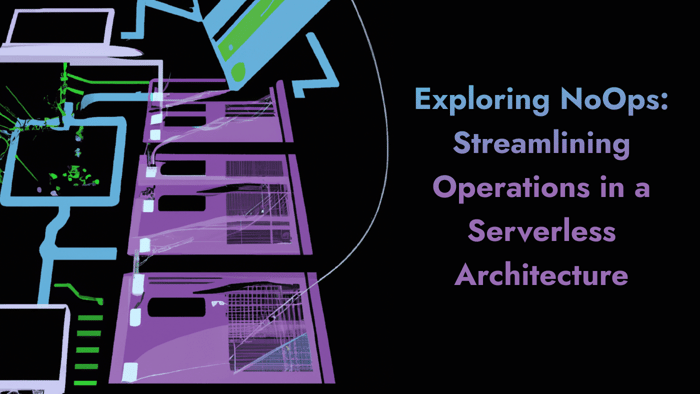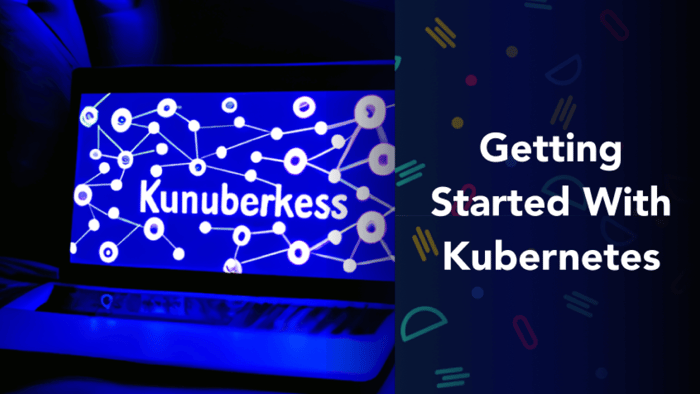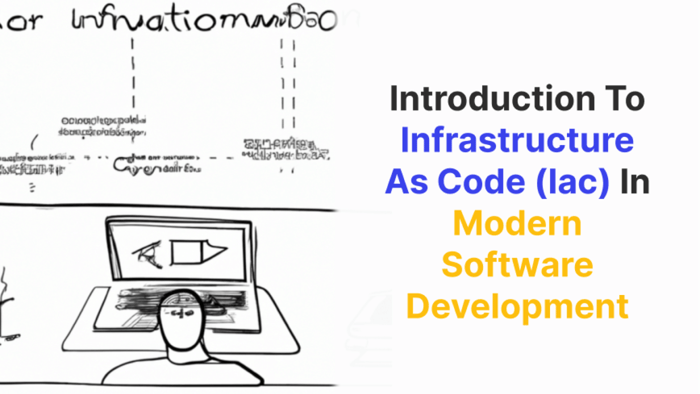Explore Unikernels in modern development and learn beyond containers.
Unikernels, often referred to as "containers 2.0" or "ultralight application images," are gaining significant traction in contemporary development practices. They offer an alternative to traditional operating systems and containers, presenting numerous advantages such as heightened security, optimized resource utilization, and faster boot times.
This comprehensive guide aims to demystify Unikernels in a manner that caters to both developers intrigued by the latest advancements and IT professionals exploring avenues to enhance their infrastructure. By distilling complex concepts into easily digestible information, this resource empowers you to make well-informed decisions, ensuring that you stay at the forefront of the swiftly evolving landscape of modern development.
Rather than simply following trends, gain an understanding of the underlying reasons propelling the rise of Unikernels. This article serves as your key to unlocking the full potential of Unikernels, fostering a deeper understanding that transcends the surface, whether you are a developer or an IT professional. Read on to embark on a journey that will equip you with the knowledge to navigate and leverage the capabilities of Unikernels effectively.
Understanding Unikernels
Unikernels serve as streamlined operating systems meticulously crafted for distinct applications or functionalities. Embracing a minimalist design philosophy, they inherently boast fewer vulnerabilities, contributing to an enhanced security posture. The unique quality of Unikernels lies in their compilation into standalone machine images, facilitating efficient deployment in cloud services while optimizing resource utilization.
Features of Unikernels
Unikernels stand apart from conventional operating systems in several pivotal ways, each contributing to their unique appeal:
- Lightweight Architecture: Unikernels prioritize a small and efficient design, incorporating only essential components necessary for running a specific application. This emphasis on minimalism enhances agility and responsiveness.
- Single-Address Space Operation: Unlike traditional operating systems relying on virtual memory addressing, Unikernels function within a single address space. This design choice minimizes context switching overhead, promoting streamlined and resource-efficient operations.
- Specialization for Optimal Performance: Each Unikernel is custom-tailored to fulfill a specific application or function. This specialization allows for maximum optimization, ensuring peak performance tailored to the unique demands of the designated task.
- Immutable Deployment Model: Unikernels typically adopt an immutable deployment model. Once deployed, they refrain from in-place modifications or updates common in traditional software. Instead, new instances are created, incorporating the latest changes while preserving the stability of existing deployments.
Containers in Cloud Computing Environments
Containers have emerged as a favored solution for deploying applications in cloud computing environments, thanks to their myriad benefits. Offering portability, scalability, and isolation, containers streamline the packaging of applications and their dependencies, ensuring consistent execution across diverse environments. However, despite these advantages, challenges, particularly in terms of compatibility and interoperability, necessitate a closer examination.
Containers, as lightweight, standalone execution environments, encapsulate applications and their dependencies. Employing operating system-level virtualization, they guarantee consistent application performance across varying platforms, abstracting away underlying infrastructure variations. This abstraction simplifies application packaging, enabling developers to deploy and scale applications seamlessly.
Advantages of Containers
Containers have been adopted widely in cloud computing environments because of their scalable nature. Here are some other advantages of using containers:
- Portability: Containers operate on any host supporting the container runtime, facilitating effortless movement between development, testing, and production environments.
- Scalability: Horizontal scaling is simplified through the replication of container instances, allowing organizations to meet increased traffic and demand efficiently.
- Isolation: Containers ensure the independence of applications on a shared host, each possessing its file system, network stack, and process space, preventing interference between applications.
Despite their advantages, containers introduce challenges, especially in cross-platform scenarios and diverse vendor ecosystems.
- Container compatibility issues: Containers built with one runtime may not seamlessly run on a different platform using an alternative runtime (e.g., Docker containers on platforms using RKT or LXC). This discrepancy hampers portability and disrupts interoperability between ecosystems.
- Interoperability challenges: Divergent image formats, networking models, storage options, and security mechanisms among containers from different vendors pose interoperability challenges. Migrating containers across platforms or integrating them into existing infrastructures can be complex due to these variations.
Recognizing the need for standardized practices, initiatives like the Open Container Initiative (OCI) have surfaced. By defining common container formats and runtime specifications, these standards strive to foster compatibility and interoperability, mitigating the challenges posed by diverse container runtimes and platforms.
Unikernels vs. Traditional Containers
Unikernels and traditional containers represent two distinct approaches to application deployment, each with its unique characteristics and advantages. Below is a comparative analysis of Unikernels and traditional containers, exploring their key differences and considerations.
In the illustration above, the Linux container ecosystem comprises multiple layers, including individual applications, binaries/libraries, a container engine, the operating system, and the kernel, all interacting with the hardware. While providing versatility, this layered structure introduces complexity in maintenance, error tracking, and monitoring.
In contrast, the Unikernel architecture is streamlined, consisting of individual application Unikernels, a hypervisor, and direct hardware interaction. This simplicity reduces maintenance overhead, enhances error-tracking precision, and fortifies security by minimizing attack surfaces. The Unikernel's focused design aligns with efficient, secure, and easily manageable deployment in modern computing environments.
Advantages of Unikernels Over Containers
Unikernels emerge as a superior choice over containers, presenting entrepreneurs and software engineers with compelling reasons for adoption. A thorough understanding of these advantages is crucial for informed decision-making in project development. Let's look into the benefits that set Unikernels apart:
- Improved Security Through Minimalistic Design: Unikernels take the lead in security, thanks to their minimalistic design that significantly reduces the potential for vulnerabilities. Unlike traditional operating systems or containers, which expose larger attack surfaces when hosting multiple applications, Unikernels embrace a highly specialized approach. They include only the essential components for a specific application or function, sharply curtailing entry points for potential attackers.
Consider the recent cyber attack on Infosys McCamish Systems, which disrupted operations. If an application had been running on a Unikernel incorporating the affected component, the attack surface would have been substantially smaller due to the inherently minimalistic nature of Unikernels. This incident underscores the security benefits of Unikernels in the face of evolving cyber threats. - Efficient Resource Utilization and Performance Optimization: Unikernels outshine containers in resource utilization and performance optimization. Their lightweight design and streamlined single-address-space architecture ensure efficient memory usage, a stark contrast to containers that necessitate a full operating system for each instance. With quick boot times and the absence of unnecessary services, Unikernels enhance overall system performance, alleviating startup delays commonly encountered with containers.
Consider the resource demands of edge computing scenarios, where devices grapple with constraints. Unikernels, by judiciously utilizing resources and maximizing performance, empower applications to run seamlessly on limited hardware. This capability addresses a critical need in resource-constrained environments, reinforcing Unikernels as an optimal choice for modern development initiatives.
Running Unikernels on ARM Architecture
Deploying Unikernels on ARM-based architecture introduces unique considerations and potential challenges. Despite the inherent benefits of Unikernels, such as enhanced security and resource efficiency, navigating the nuances of ARM devices or platforms demands meticulous planning and strategic problem-solving.
Here are some considerations you should look out for when working with Unikernels on ARM architecture:
- Compatibility: Ensuring compatibility between the Unikernel and ARM-based hardware is paramount. Given the specialized nature of Unikernels, dependencies on specific instructions or hardware features may pose challenges across diverse ARM devices. Verification of the Unikernel's support for the targeted ARM architecture becomes a critical checkpoint.
- Device Drivers: Unikernels, designed with minimalistic principles, may lack essential device drivers for ARM devices. The reduction in attack surface comes at the cost of potential driver gaps. Addressing this challenge involves additional efforts, such as porting or developing device drivers specific to the chosen ARM architecture.
- Tooling Support: Evaluating tooling support for building and deploying Unikernels on ARM architecture is pivotal. While established tools and frameworks exist for Unikernel development, their support for ARM-based platforms may vary. Ensuring cross-compilation capabilities and robust debugging features in the chosen tooling is essential.
- Platform Variations: The diverse landscape of ARM architecture introduces variations in features, instruction sets, and system configurations. A nuanced understanding of the target ARM platform's characteristics is indispensable, ensuring seamless compatibility between the selected Unikernel and the specific variations within the ARM ecosystem.
- Testing and Validation: Thorough testing and validation are imperative for deploying Unikernels on ARM devices. This process encompasses comprehensive scenarios, including stress testing, compatibility testing with peripherals, and performance evaluations under diverse workloads.
Recent innovations have fostered Unikernel platform providers, including NanoVMs, Unikraft, and Unik. These providers offer tailored solutions for efficient Unikernel deployment, addressing complexities and streamlining the integration process.
You can get started setting up Unikernels on NanoVMs 64-bit ARM platforms, a comprehensive guide is available here. This official guide walks users through the setup process, ensuring a smooth and informed experience in leveraging Unikernels on NanoVMs' ARM architecture.
Real-World Applications of Unikernels
In recent years, Unikernels have gained significant attention due to their unique characteristics and potential benefits in various industry sectors. One particular area where Unikernels have shown great promise is edge computing.
Edge computing, characterized by processing data closer to the source or the network's "edge," diverges from centralized cloud infrastructure. This paradigm shift brings forth benefits such as reduced latency, heightened security, and more efficient use of network bandwidth.
Unikernels, with their lightweight profile and meticulous control over system resources, prove to be a natural fit for edge computing. This synergy has led to successful deployments in various real-world scenarios including:
- IoT (Internet of Things) Devices: Unikernels excel in crafting highly optimized and secure firmware for IoT devices. Tailoring the operating system to device requirements results in improved performance, reduced memory footprint, and enhanced security compared to conventional operating systems.
- Edge Gateways: Unikernels find ideal applications in running lightweight services on edge gateways, serving as intermediaries between IoT devices and cloud services. Given the limited resources of these gateways, Unikernels optimize resource utilization, ensuring fast boot times and heightened security.
- Content Delivery Networks (CDNs): Building on their strengths, Unikernels contribute to the efficiency of CDNs by creating nodes specialized for content caching. This specialization translates to expedited content delivery and reduced bandwidth consumption, enhancing overall CDN performance.
Adoption Trends and Future Prospects
While Unikernels’ adoption in edge computing is in its nascent stages, a burgeoning interest in exploring their potential benefits is evident. As organizations increasingly recognize the imperatives of efficient resource utilization and heightened security in edge environments, Unikernels are poised for further traction.
Factors Driving Unikernel Adoption in Edge Computing:
- Resource Efficiency: The minimalistic design of Unikernels allows them to operate with minimal resource requirements, aligning seamlessly with the constraints of edge devices.
- Security: The reduced attack surface of Unikernels bolsters security, a critical consideration in edge deployments where physical security may pose challenges.
- Performance Optimization: Unikernels' near-instantaneous boot times contribute to improved overall system performance, facilitating faster response times at the edge.
As Unikernel adoption matures and tooling evolves, we anticipate witnessing more innovative use cases and advancements in the dynamic landscape of edge computing. Unikernels stand as an exciting alternative for building efficient and secure systems in resource-constrained environments, shaping the future of edge computing.
The Future and Role of Unikernels in Cloud-Native Ecosystems
As Unikernels gain traction, their future role in cloud-native ecosystems appears promising, driven by evolving tooling and heightened ecosystem support. Unikernels offer unique advantages that align seamlessly with the demands of modern cloud-native environments, where scalability, efficiency, and security are paramount.
Current Trends and Considerations:
- Resource Efficiency: Unikernels, known for their minimalistic design, operate efficiently with minimal resource requirements. This makes them well-suited for resource-constrained edge devices and aligns with the efficiency demands of cloud-native environments.
- Security Enhancement: The reduced attack surface of Unikernels enhances security, a critical consideration in cloud-native deployments where robust security measures are imperative. Unikernels inherently minimize vulnerabilities, contributing to a more resilient security posture.
- Performance Optimization: Unikernels boast near-instantaneous boot times, contributing to improved system performance. This capability aligns with the need for faster response times in cloud-native applications, enhancing overall efficiency.
Emerging Landscape:
- Growing Interest: There is a burgeoning interest in exploring the potential benefits of Unikernels in cloud-native environments. As organizations recognize the need for efficient resource utilization and enhanced security, Unikernels are likely to gain further attention and adoption.
- Maturing Tooling: The tooling for Unikernel development is maturing, providing developers with robust frameworks for building and deploying Unikernels. As these tools become more comprehensive, the barriers to entry for Unikernel adoption in cloud-native ecosystems are likely to decrease.
- Advancements in Use Cases: As Unikernel adoption matures, we can expect to witness innovative use cases and advancements. The unique characteristics of Unikernels, such as their specialization for specific applications and efficient resource utilization, open doors for novel applications in cloud-native scenarios.
The future role of Unikernels in cloud-native ecosystems seems poised for growth and diversification. With ongoing advancements in tooling, increasing awareness of their benefits, and a shift towards more efficient and secure computing paradigms, Unikernels are well-positioned to play a crucial role in shaping the future of cloud-native development.
Conclusion
The choice between Unikernels and traditional containers depends on specific application requirements and the characteristics of the deployment environment. Unikernels shine in scenarios demanding efficiency, security, and specialization, such as edge computing and IoT devices. Traditional containers, with their versatility and wide-ranging use cases, remain a robust choice for diverse applications across industries.
As technology evolves and use cases diversify, both Unikernels and traditional containers contribute valuable solutions to the dynamic landscape of modern application deployment.
Akava would love to help your organization adapt, evolve and innovate your modernization initiatives. If you’re looking to discuss, strategize or implement any of these processes, reach out to [email protected] and reference this post.





